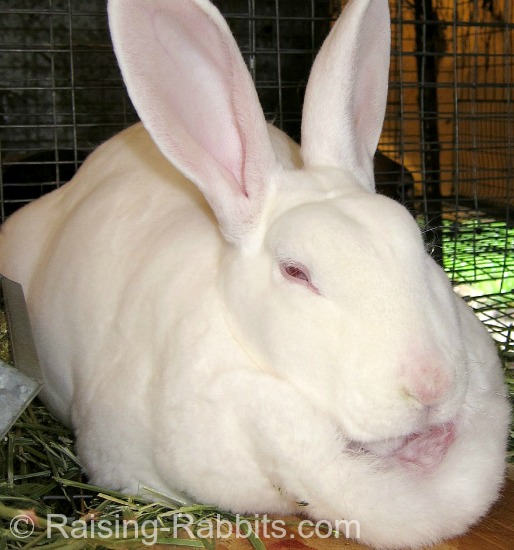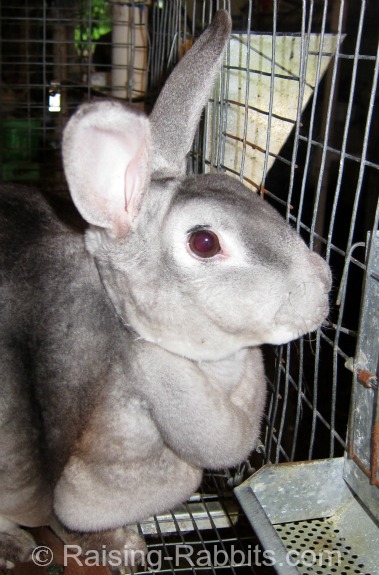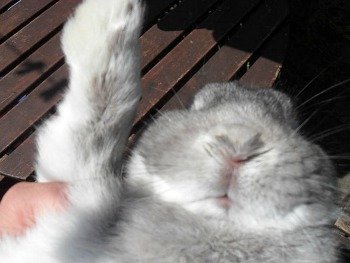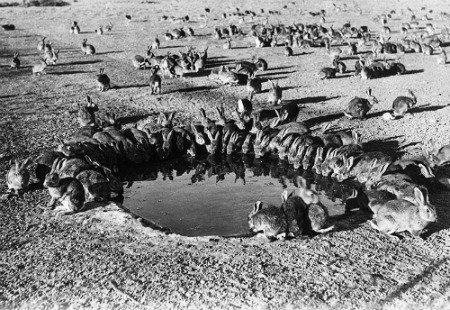| Back to Back Issues Page |
 |
|
Rabbit Rhythm 55 – Humans and Pasteurellosis in the food chain, plus more December 23, 2014 |
Rabbit Rhythms of DecemberDewlaps in Female Rabbits
Brittany in Florida would like to know about dewlaps: “My doe doesn't have a dewlap although she's never bred either. From the pictures of your does they have a huge dewlap but my doe does not. Does it come when she breeds or when she ages?” Yes, my does do tend to have ample dewlaps, don't they?! Most Rex Rabbit does have dewlaps, some bigger than others. If a rabbit has one, the dewlap reaches its final size as the rabbit reaches full maturity. Sometimes, at least in my barn, you can tell the older does by a dewlap that begins to sag away from the chin. Does of many breeds develop dewlaps, but many other breeds never do so. This is because in their breed, a dewlap may be considered a fault that mars the overall presentation of the rabbit. Over many years the rabbits have been selectively bred to not develop a dewlap. So if your rabbit does not have a dewlap, no worries. It most likely is not meant to have one.
From Robert in Florida:“I raise meat rabbits. I have been on various sites learning and gathering info. This site has been what I’ve been looking for. Thank you.” Thank you Robert! From Cindy in Washington State: Thank you Cindy for sharing your appreciation!
Pasteurellosis in the Human Food Chain?Rabbits are susceptible to the ubiquitous bacterium, Pasteurellosis multocida. The most common disease this germ causes is Snuffles. Every rabbit rancher and rabbit breeder recognizes the need to not utilize sneezing rabbits for breeding. Livestock rabbits sick with Pasteurellosis should be culled.The practice of culling thankfully results in a herd of rabbits with strong immunity, meaning their bodies are capable of resisting and conquering P. multocida (and a reduced need to cull for sickness).
Is Pasteurellosis contagious or dangerous to humans through the meat of a sick rabbit culled for snuffles?* Under most circumstances the answer is no. Rabbits that have been processed due to symptoms of respiratory Pasteurellosis (for example, white nasal discharge and sneezing) are safe for eating. The reasons are several. First, the parts of the rabbit where the germs lurk (lungs and sinuses) are not typically a part of the meal plan. You will no doubt discard these. Additionally, P. multocida is already everywhere in our own environments; our human immune systems have been ably handling it for years. Lastly, cooking kills any and all germs. The meat itself is unaffected by P. multocida. A person who is severely immune-compromised, for example, on drugs that lower the immune system such as chemo and some drugs for autoimmune diseases, or are debilitated from AIDS, have rarely been known to fall ill from P. multocida. These individuals should probably not be raising any livestock, however there is no danger from eating such a rabbit. *(Note: A rabbit that is debilitated and run down, or heavily infected by abscesses, should be condemned in its entirety. This discussion is relative to an otherwise active rabbit that has persistent sneezing due to Pasteurellosis.)
The Rabbits Of 1859:
|
| Back to Back Issues Page |


